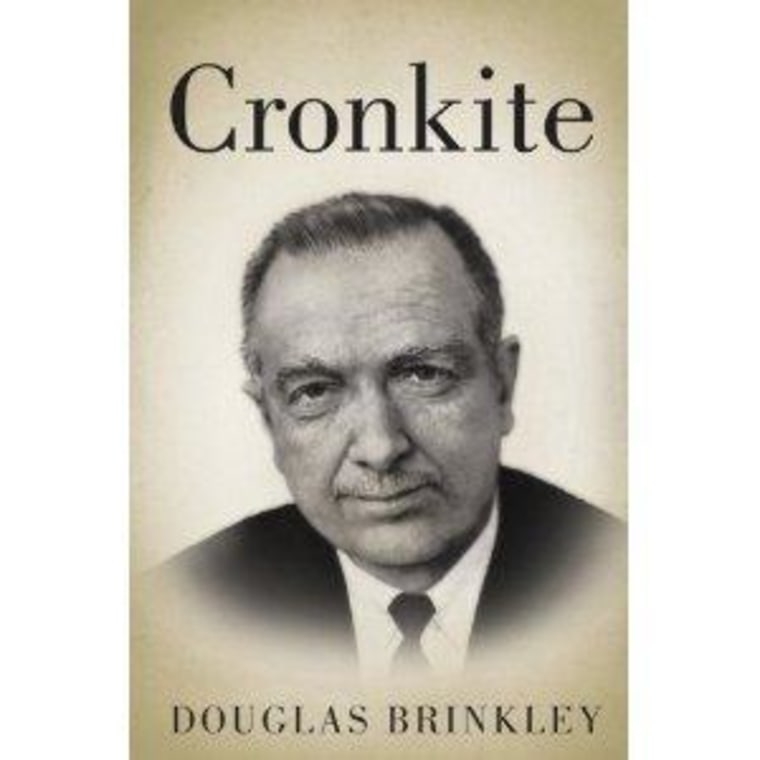On March 3, 1981, just three days before Cronkite ceded the CBS Evening News spot to Dan Rather, President Reagan sat down with the broadcast legend for an hourlong exclusive interview from the White House. Reagan had been a bona fide fan ever since Cronkite took over the anchor chair in 1962. The cordiality between the two was self-evident. Cronkite started out by asking Reagan about the Middle East, the Soviet Union, and the struggling economy. Toward the end of the interview Reagan, in a reversal, became the kindhearted inquirer. “I know you must be having a little nostalgia,” he suddenly interjected with a smile, “the many presidents that you’ve covered in this very room . . .”
“Indeed so, sir,” Cronkite replied. “I was counting back. It’s eight presidents. It’s been a remarkable period in our history.”
And then Reagan said, with genuine warmth, “Well, may I express my appreciation. You’ve always been a pro.”’
Read more Morning Joe book excerpts
The avalanche of press stories marking Cronkite’s high-profile retirement that month was mind-boggling. Newsweek put Cronkite on the cover in a large box screen surrounded by the dwarfed faces of Dan Rather, John Chancellor, and Frank Reynolds. The banner read, “After Cronkite.” CBS purchased more than fifty full-page newspaper ads featuring Cronkite with the headline, “Introducing Our Newest Correspondent”—a happy reminder that the retiring legend would get paid $1 million a year to occasionally host a Special Report. A thoughtful ABC News—Cronkite’s third-place competitor (after NBC News)—countered with a full-page advertisement in The New York Times in tribute to his broadcast career. Other newspapers likewise printed their own “Thank you, Walter” ads before he went into eclipse.
From coast to coast Cronkite’s good-bye broadcast was billed as if it were game seven of the World Series: must-watch TV. Accolades, telegrams, and special awards came pouring in full force from so many quarters that Cronkite, with amiable amusement, hired a special secretary for two weeks to manage the deluge of mail. When Betsy Cronkite was asked by Parade why her husband seemed to be liked by everybody, her answer was both funny and probably true. “I think,” she said, “it’s because he looks like everyone’s dentist. Both his father and grandfather were dentists, you know.
Sixty-eight-year-old Eric Sevareid of CBS News, still the erudite Minnesota silver fox, appeared on ABC’s Good Morning America to say that more media attention was being paid to Cronkite’s departure than to Jimmy Carter’s farewell address. “The image of Walter
Cronkite is a national symbol,” Mark Crispin Miller and Karen Runyon wrote in The New Republic. “When it no longer appears at the anchor desk, it will be as if George Washington’s face had suddenly vanished from the dollar bill.”
Circumspect and unemotional, Cronkite, in the fullness of his fame, wasn’t memorable on his farewell broadcast. The loyal CBS Evening News audience was hoping for a dramatic departure that March evening, with the venerable man-of- the-half-hour saying something worthy of Bartlett’s Familiar Quotations. It was instead all business as usual. Cronkite’s wife, children, and agent watched the public adieu in the studio. Dan Rather did the same, only on a TV set in the office of executive producer Sandy Socolow. The assumption was that the last broadcast would be a memory-lane affair, a triumphal procession of his greatest moments.
But Cronkite’s last news story as anchorman was a NASA space shuttle update, his demeanor typically low-key. During the final commercial break, Cronkite told the crew, “Don’t get nervous, everybody; we’ll try to do it just like we rehearsed.” Ironically, his last two minutes on the air as anchorman—simulcast by NBC News and ABC News—represented perhaps the first time that Cronkite was out of sync with his viewing audience. To his loyal fans he seemed visually awkward and self-conscious. Of his own accord, Cronkite turned to a shopworn cliché to close the broadcast: “Old anchormen, you see, don’t fade away. They just keep coming back for more.” Rather, time would prove, did not like those last seven words.
Cronkite told the TV viewers that his retirement was “but a transition, a passing of the baton” to a younger Turk. And with that, he uttered the trademark sign-off, “And that’s the way it is,” one last time, continuing, “Friday, March 6, 1981. I’ll be away on assignment, and Dan Rather will be sitting in here for the next few years. Good night.”
